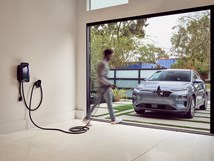About that Autonomous Vehicle. . . .
One of the bigger issues related to the average consumer’s receptivity to autonomous vehicles has nothing to do with, say, the SAE taxonomy and knowing whether something is Level 2 or Level 3, and nothing to do with whether someone was watching a film about hobbits and orcs when they should have been paying attention to the road ahead.
#electronics
One of the bigger issues related to the average consumer’s receptivity to autonomous vehicles has nothing to do with, say, the SAE taxonomy and knowing whether something is Level 2 or Level 3, and nothing to do with whether someone was watching a film about hobbits and orcs when they should have been paying attention to the road ahead.
No, it is simply this: They don’t have the slightest idea of what an autonomous vehicle is.
That’s my assessment based on a survey conducted by a firm named Reportlinker, a survey designed to help suss out whether people are ready for autonomy. This study follows one that was performed in 2016.
Here’s the thing: the respondents were asked “When purchasing your next car, how autonomous would you like it to be?” There choices were Fully, Partially and Not At All.

You can’t buy this Fusion. Probably not even in 2021, 22, 23. . . .
In 2016 46 percent answered “Fully.” In 2017 that number rose to 53 percent. That’s right: more than half said that they’d like to buy a fully autonomous vehicle next time they’re in the market.
What is the percent of fully autonomous vehicles that were on dealer lots in 2016, a year when a record 17.6-million light vehicles were sold in the U.S.?
Zero.
What is the percent of fully autonomous vehicles that are presently on dealer lots?
Zero.
It is interesting to note that those answering “Partially” numbered 36 percent in 2016 and 34 percent in 2017. Seems like some of those who were looking for some decided that the whole thing is better.
But you can get some right now, as in various sensor-based systems that will hold you in your lane, apply the brakes as needed and modulate the throttle.
But full? Maybe in 2021—and that would be a vehicle that could operate in a restricted (i.e., “geofenced”) area and would more than likely be sold to a fleet operator, not an individual.
Still, things are looking up for autonomous interest. Those answering “Not At All” in 2017 were 13 percent, down a solid five points from 2016.
RELATED CONTENT
-
Lincoln Corsair Takes Flight
“We wanted to create a dramatic, youthful Lincoln with terrific harmony.” And with the Corsair, they’ve accomplished what they set out to do.
-
Special Report: Toyota & Issues Electric
Although Toyota’s focus on hybrid powertrains at the seeming expense of the development of a portfolio of full battery electric vehicles (BEVs) for the market could cause some concern among those of an environmental orientation, in that Toyota doesn’t seem to be sufficiently supportive of the environment, in their estimation. Here’s something that could cause a reconsideration of that point of view.
-
TRW Multi-Axis Acceleration Sensors Developed
Admittedly, this appears to be nothing more than a plastic molded part with an inserted bolt-shaped metal component.


.jpg;width=70;height=70;mode=crop)






